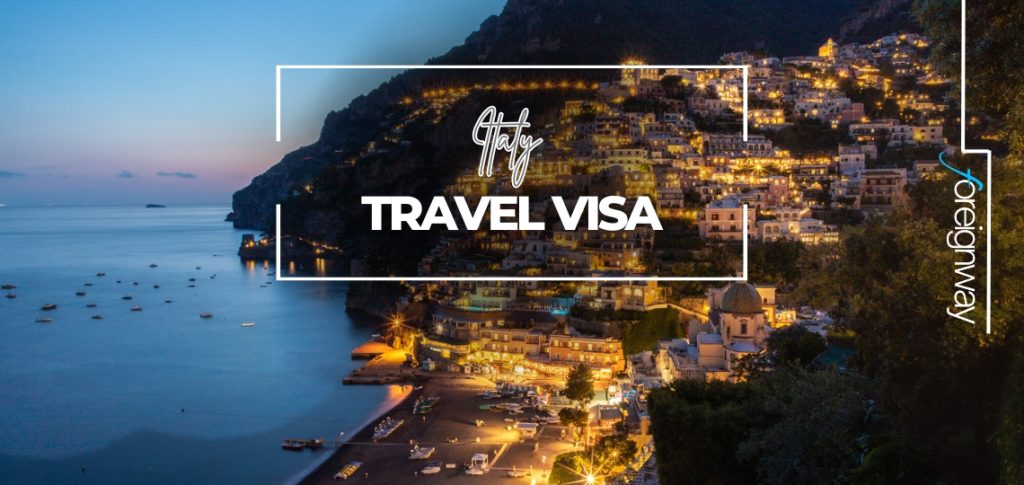Italy Travel VISA: 5 Fast-Track Approval Tips

Securing your Italy travel VISA is the first step to exploring Rome’s ancient ruins, Venice’s canals, and Tuscany’s vineyards. With updated 2025 regulations, this guide provides practical tips to streamline your application, avoid delays, and ensure approval.
Table of Contents
Understanding the Italy Travel VISA Process:
The Italy travel VISA falls under the Schengen VISA category, allowing short stays (up to 90 days) in Italy and 26 other European countries, below, we break down the essentials:
1. Choose the Right VISA Type
Selecting the correct Italy travel VISA is critical:
- Tourist VISA: For leisure, sightseeing, or visiting family/friends.
- Business VISA: Attending meetings, conferences, or contract work.
- Student VISA: Enrolling in courses shorter than 90 days.
- Transit VISA: For layovers in Italian airports.
Note: Stays exceeding 90 days require a National (Long-Stay) VISA.
2. Know the 2024 Costs and Fees
The Italy VISA fees vary by age and VISA type:
- Adults (18+): €80
- Children (6–12): €40
- Children under 6: Free
Additional costs may include: - Service fees (€30–€50) at VISA centers like VFS Global.
- Travel insurance (€30–€100) with €30,000 medical coverage.
Always verify fees on Italy’s official VISA portal before applying.
3. Prepare Required Documents
Missing paperwork is the top rejection reason. For your Italy VISA, gather:
- Valid passport: 2 blank pages + 3 months validity post-trip.
- Completed application form: Signed and dated.
- Passport photos: 2 recent, 35x45mm, white background.
- Proof of funds: Bank statements (€45–€60/day of stay) or sponsorship letters.
- Travel insurance: Covers emergencies and repatriation.
- Flight/hotel bookings: Round-trip flights and confirmed accommodations.
- Cover letter: Explain your trip’s purpose and itinerary.
4. Confirm Eligibility Criteria
To qualify for an Italy VISA, you must:
- Have a clean criminal record.
- Prove strong ties to your home country (job, property, family).
- Show sufficient funds for the entire stay.
- Provide a clear travel plan with no overstay risk.
5 Fast-Track Approval Tips for 2025:
Tip 1: Apply Early (But Not Too Early)
Submit your Italy travel VISA application 3–4 months before travel. Avoid applying earlier—Schengen VISAS can’t be issued more than 6 months in advance.
Tip 2: Double-Check Document Accuracy
Typos in names, dates, or passport numbers lead to rejections. Use checklists from your local Italian consulate or VISA center.
Tip 3: Prepare for the Interview
Anticipate questions like:
- “Why Italy?” → Highlight specific plans (e.g., “Exploring Florence’s Uffizi Gallery”).
- “How will you fund your trip?” → Reference your bank statements or sponsor letter.
Tip 4: Use VISA Center Services Wisely
Premium services (e.g., document checks, SMS updates) cost extra but reduce errors. For complex cases, consider hiring an accredited VISA consultant.
Tip 5: Track Your Application
After submission, monitor your status via the Italian Ministry of Foreign Affairs portal. Delays often signal missing documents—respond promptly.
Avoid These Common Mistakes:
- Overbooking itineraries: A 10-day trip to 5 cities looks suspicious. Keep plans realistic.
- Copy-pasted cover letters: Personalize your letter to reflect genuine intent.
- Expired insurance: Policies must cover your entire stay.
Let Foreignway Simplify Your Application!
Juggling Italy travel VISA requirements can be overwhelming. Foreignway.com offers end-to-end VISA support, from document checks to interview prep. Spend less time stressing and more time dreaming of pasta and gelato.
Disclaimer: Italy’s VISA fees and rules are subject to change. Always confirm requirements through the Italian Ministry of Foreign Affairs or your nearest consulate.
